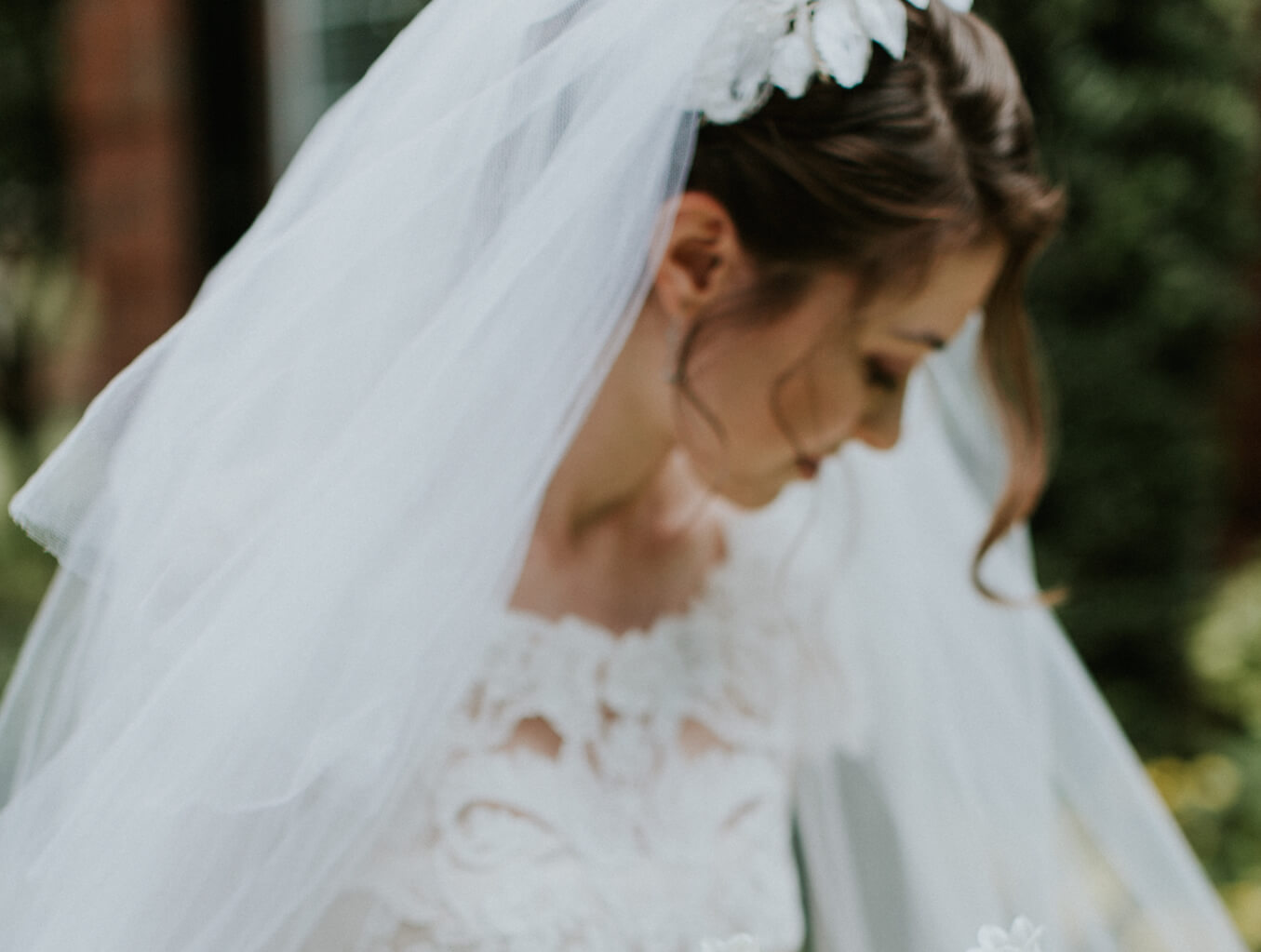Something Old, Something New

The pictures in my mother’s scrapbook testify that, like most little girls I’ve met, my sisters and I wore dress-up clothes more often than not for our first five or so years of life. The magic of the dress-up box, and of the girlish imaginations that transformed its contents into anything from the richest regal robes to the poorest paupers’ rags, sustained our liveliest play and solemnest pretending for a long season.
But a few of the more precious dress-up clothes, reserved for our special-est days, were not kept in the box; safe in my mother’s closet hung the handmade pioneer dresses, the delicate straw hats, the lace-trimmed colonial gowns, and—most sacred of all—my grandmother’s wedding veil. Most of our dress-up treasures were packed away or dispersed years ago; but, last month, I dressed up again, and pinned on that same veil, for my wedding day.
It was the “something old” of the rhyme, and, perhaps because it meant so much, the little refrain has echoed in my mind through these first weeks of marriage. Something old, something new . . .
Before our wedding, I confessed to my fiancé that, amidst my joy, I also was mourning; so many losses loomed in the general renunciation encompassed by “forsaking all others,” stretching far beyond the other suitors more immediately referenced there. Though we would be living in the same town where we met and I grew up, I felt keenly the end of my part in my family’s daily rhythms, of my dwelling in their home, of the walks and drives I could pick out with eyes closed, of the shifting of light through the Spanish moss that I’ve watched from the kitchen each day and each season for the eighteen years I’ve lived there—of countless details I have sought to cherish. There were also all the sharp sweetnesses of our courtship that would be outgrown: the decorum of engagement, the pungency of goodbyes, the pulse of longing, the mystery we were to one another. And then, vague but potent, hovered the extinction of many might-have-beens—good dreams renounced for the better dream chosen.
But then came the image of transfiguration. I think my mind must have snagged it from Four Quartets: “See, now they vanish, / The faces and places, with the self which, as it could, loved them, / To become renewed, transfigured, in another pattern.” Eliot speaks here of memory, and of its use within the passing of time. Beneath the whirl of clocks ticking and moments flying, the ceaseless loss of the present and all it holds, memory catches up “the faces and places” and even the selves we soon outgrow; woven on memory’s loom, they all will become part of a tapestry whose narrative we can trace from further down, reading there the secret significance of the seeming ordinary that only transfiguration could reveal.
All those loves—of home and family and oaks and dreams—they could not be lost; they would be treasured in my memory, and somehow shape all that my hands would do and my heart love in the days ahead. That great Unknown beyond marriage would surely take me by surprise—but not only because of things new; things old would also reappear, transfigured, fresh in import.
As this has begun to happen, and every day meets me with “something old, something new,” I am catching that refrain running through all of life, and not just marriage. Every conversation picked up with friends, every return to a place, every seven days, is both fresh and familiar. It is, C.S. Lewis says, written into the very world: God gives a “union of change and permanence” in the seasons, “each season different yet every year the same, so that spring is also felt as a novelty yet always as the recurrence of an immemorial theme,” and He gives too a liturgical year that changes “from a feast to a feast, but it is the same feast as before.” It is, indeed, a rhythm that will swell unto the New Creation, in which Jerusalem and the Tree of Life and all the saints of God shall be changed “in a moment, in the twinkling of an eye, at the last trumpet”—and yet remain, gloriously, themselves.
As we stand now at one of those particular turnings that will bring things old and things new—the turning towards a school year in which we will welcome returning students and orient new ones, read books for the tenth or twentieth time and yet find fresh insights within them, ask unfamiliar questions in classrooms whose every paint-nick is known, carry new emotions through doors and down hallways that have witnessed already so many full-hearted moments—it is a good time to simply attend to and delight in this refrain, this rhythm that our Creator has joyously composed into the cantus-firmus of His world. If our lives are for the giving of thanks, then here is one more pearl on the strand of divine gifts for which to praise God from whom all blessings flow.

Lindsey Brigham Knott
Lindsey Knott relishes the chance to learn literature, composition, rhetoric, and logic alongside her students at a classical school in her North Florida hometown. She and her husband Alex keep a home filled with books, instruments, and good company.










